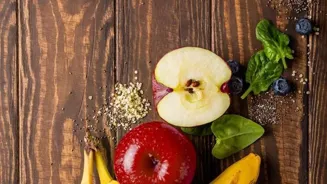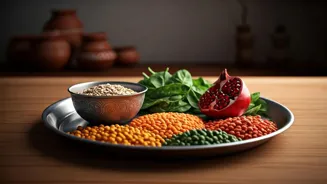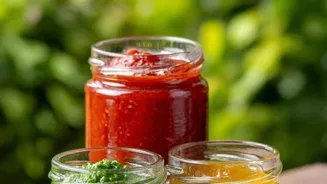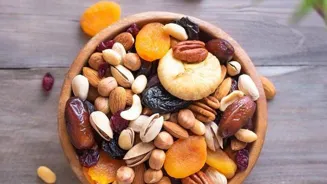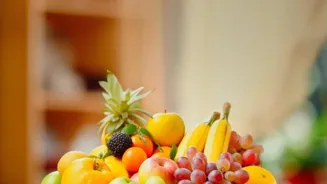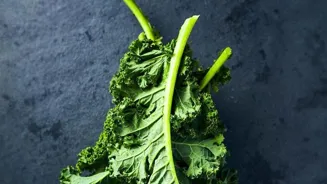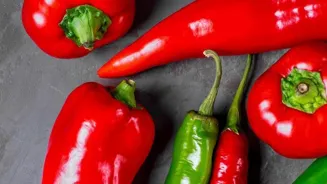Discover the secrets to a balanced plate in our ultimate guide - unlock the power of nutritious foods for a healthier you!
Namaste, readers! In a country brimming with delectable cuisines, building a balanced
plate can seem like a Herculean task. But fear not, we're here to simplify your journey to a healthier you.
Forget fad diets and restrictive eating; it's all about understanding the fundamentals and incorporating a variety of nutrient-rich foods into your daily meals.
A balanced plate provides your body with the essential building blocks it needs to function optimally, boost immunity, and keep you feeling energized throughout the day. So, let's dive into the delicious world of creating a plate that nourishes your body and delights your taste buds.
Our aim is not just to provide a food chart, but to arm you with knowledge and help you make informed food choices, making every meal a step towards well-being. After all, good health is the real wealth, isn't it? And it all begins with what's on your plate.
Explore diverse whole grains for improved health & energy
Let's begin with the cornerstone of any healthy Indian meal: grains. We're not just talking about plain white rice here. While rice surely occupies a significant place, let's explore a world of whole grains that offer a treasure trove of benefits.
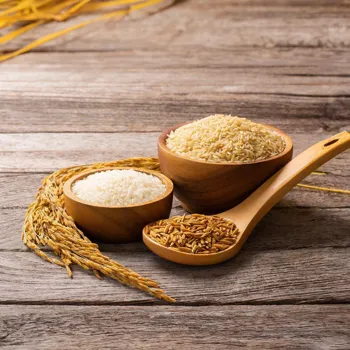
Think brown rice, which retains the bran and germ, offering a nutty flavor and a boost of fiber. Then there's quinoa, a complete protein source, packed with amino acids and essential nutrients, a boon for vegetarians and vegans alike.
Don't forget about millets – jowar, bajra, ragi – ancient grains making a comeback for all the right reasons! They are naturally gluten-free, rich in fiber, and offer a unique earthy taste, perfect for rotis, khichdi, or even innovative desserts.
These whole grains are digested slowly, preventing energy crashes and promoting a feeling of fullness, aiding in weight management. They also contribute to better gut health, thanks to their high fiber content, promoting a healthy digestive system.
So, swap refined grains with these wholesome alternatives and experience the difference in your energy levels and overall well-being!
Embrace the rainbow of nutrients in fruits and veggies for a healthy body
Next, we move onto the vibrant world of vegetables and fruits – the undisputed champions of a balanced plate! These natural wonders are brimming with vitamins, minerals, antioxidants, and fiber, essential for a healthy body and a glowing complexion.
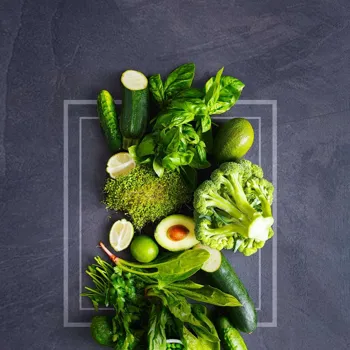
Aim for a rainbow of colors on your plate – green leafy vegetables like spinach and methi, rich in iron and vitamins; orange and yellow vegetables like carrots and pumpkins, packed with beta-carotene for healthy vision; and red vegetables like tomatoes and beetroot, loaded with antioxidants.
Don't underestimate the power of seasonal fruits like mangoes (in season, of course!), bananas, oranges, and berries. Each fruit offers a unique blend of nutrients, contributing to overall health and well-being.
Whether it's a crunchy cucumber salad, a hearty vegetable curry, or a refreshing fruit chaat, make sure to incorporate a generous serving of these plant-based powerhouses into your daily meals. Remember, variety is the spice of life, and it certainly applies to your vegetable and fruit intake.
Protein: essential for body function, varied sources for all
Now, let's talk about the often-overlooked but incredibly important component of a balanced plate: protein. Protein is the building block of our body, essential for muscle repair, cell growth, and hormone production.
For vegetarians, there are plenty of delicious and nutritious options to choose from. Lentils (dal) are a staple in Indian cuisine and a fantastic source of protein and fiber.
From comforting dal tadka to hearty sambar, lentils can be incorporated into a variety of dishes; chickpeas (chole) are another versatile legume, perfect for chole bhature, salads, or even roasted as a healthy snack.
Don't forget about kidney beans (rajma), moong beans, and black-eyed peas – each offering a unique flavor and nutritional profile; dairy products like paneer (Indian cheese) and yogurt are also excellent sources of protein and calcium.
Include a serving of these protein-rich foods in every meal to keep you feeling full, energized, and to support your body's vital functions. Protein is the king of feeling satisfied.
Healthy fats are essential for health, choose wisely for benefits
Fats often get a bad rap, but healthy fats are essential for optimal health. They play a crucial role in hormone production, vitamin absorption, and brain function. However, it's important to choose your fats wisely.
Opt for unsaturated fats found in nuts, seeds, and vegetable oils like olive oil and groundnut oil. Avoid trans fats found in processed foods and excessive amounts of saturated fats.
Nuts and seeds like almonds, walnuts, flaxseeds, and chia seeds are packed with healthy fats, protein, fiber, and antioxidants. A handful of nuts a day can contribute to heart health and improve brain function.
Using olive oil or groundnut oil for cooking is a healthier alternative to refined vegetable oils. Remember, moderation is key when it comes to fats. Don't shy away from including healthy fats in your diet, but be mindful of the quantity and the source. A small change will help you make big impact.
Hydration is key for overall health; drink water daily for wellness
Hydration is the unsung hero of a balanced lifestyle. Water is essential for virtually every bodily function, from transporting nutrients to regulating body temperature; aim to drink at least 8 glasses of water a day, and even more if you're physically active or live in a hot climate.
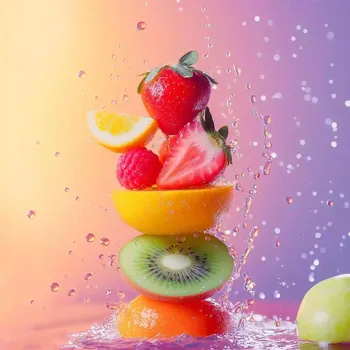
Besides water, you can also stay hydrated with herbal teas, coconut water, and fresh fruit juices (preferably without added sugar). Avoid sugary drinks like sodas and packaged juices, as they offer empty calories and can be detrimental to your health.
Starting your day with a glass of water or lemon water can kickstart your metabolism and improve digestion. Carry a water bottle with you and sip on it throughout the day. Hydration is not just about quenching your thirst; it's about supporting your overall health and well-being.
Good health will make you beautiful inside out.
Guide to building a balanced Indian plate with whole foods for health and energy
So, there you have it – the ultimate guide to building a balanced plate, Indian style!
By incorporating whole grains, a rainbow of vegetables and fruits, plant-based proteins, healthy fats, and staying adequately hydrated, you can create a plate that nourishes your body, boosts your energy levels, and promotes overall well-being.
Remember, it's not about strict rules or deprivation; it's about making informed food choices and enjoying a variety of delicious and nutritious foods. Listen to your body, experiment with different recipes, and find what works best for you.
A balanced plate is not just a meal; it's an investment in your health and happiness. So, go ahead and build your own balanced plate – your body will thank you for it! Remember consistency is the key.
AI Generated Content. Glance/InMobi shall have no liability for the content

